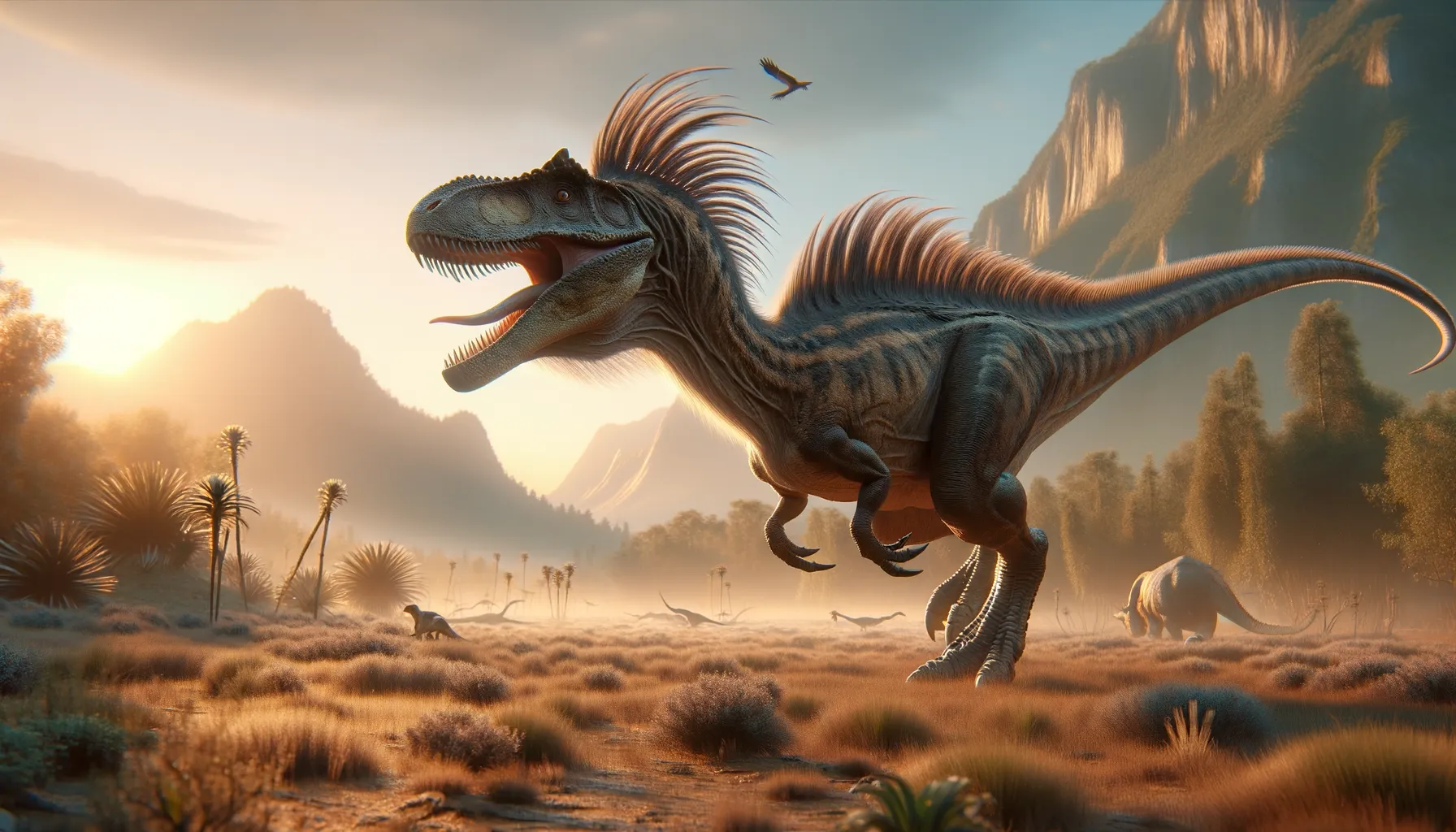
Bagaraatan
A nimble hunter of prehistoric Mongolia.
Period
Cretaceous
Length
Around 3 meters long.
Height
Roughly 1 meter at the hip.
Weight
Approximately 25 kilograms.
Bagaraatan was a small theropod dinosaur that lived during the Cretaceous period, primarily in what is now Mongolia. It was a bipedal carnivore, characterized by its lightweight, agile frame and sharp teeth, ideal for hunting smaller prey. This dinosaur adds valuable insight into the diversity and evolutionary path of theropods transitioning into birds. Its fossils offer crucial data for scientists studying the period's ecosystem.
Diet
Bagaraatan was a carnivore, likely preying on small vertebrates and possibly insects. Its sharp teeth suggest a diet that required precise and quick bites, suitable for catching swift or elusive prey.
Hunting
It likely employed ambush tactics, using its small size and agility to surprise prey. Evidence points to a solitary hunting style, relying on stealth rather than speed to catch its meals.
Environmental challenges
During the Cretaceous period, Bagaraatan faced a dynamic environment with changing climates, which required adaptability. The competition from larger predators would have been a constant challenge, as it needed to avoid becoming prey. Additionally, Bagaraatan had to navigate a landscape that was periodically affected by volcanic activity and other natural events, which could disrupt its habitat and food sources.
Speed
It was likely a swift predator.
Lifespan
Estimated to be similar to other small theropods.
First discovery
Discovered in Mongolia in 1993.
Fun Facts
- Bagaraatan means 'small hunter', a nod to its presumed diet and size.
- This dinosaur lived during the Late Cretaceous period, around 70 million years ago in what is now Mongolia.
- Bagaraatan was a theropod, a group of dinosaurs known to include the ancestors of modern birds.
- Despite its name suggesting it was small, Bagaraatan was actually about the size of a large dog.
- The only known specimen of Bagaraatan was found in the Nemegt Formation, a famous fossil site in Mongolia.
- Bagaraatan had features that suggest it was a nimble and agile predator.
- Some scientists believe Bagaraatan might provide key insights into theropod diversity during the Late Cretaceous.
Growth and Development
Bagaraatan would have undergone rapid growth to quickly reach a size suitable for self-defense and hunting. The development of its agile physical traits would have been crucial for survival, enabling it to efficiently evade predators and catch prey. Fossil evidence suggests a relatively short maturation period compared to larger theropods.
Habitat
Bagaraatan lived in a varied environment that consisted of open woodlands and river valleys. This habitat would have provided a rich supply of small prey and vegetation for cover. Seasonal changes could have impacted water sources and food availability, requiring adaptability from Bagaraatan to thrive in such conditions.
Interaction with other species
Bagaraatan likely had to coexist with both smaller and larger predators, maintaining a delicate balance to avoid conflict. While it primarily hunted alone, occasional encounters with other Bagaraatan individuals may have occurred during mating seasons. Its interactions would have also included competition with similar-sized carnivores for food and territory.
Natural lifespan
Bagaraatan had a natural lifespan similar to other small carnivorous theropods.
Reproduction
Bagaraatan likely reproduced by laying eggs, similar to other theropods. Nesting areas would have been chosen carefully to ensure protection from predators and environmental threats. Parental care in theropods varies, but Bagaraatan's reproductive strategy might have included some level of guarding and nurturing the young.
Social behaviour
This dinosaur is thought to have been more solitary, focusing on individual survival skills to hunt and evade detection. During mating seasons, it might have temporarily paired with partners, displaying certain rituals or markings to attract mates. Once reproductive needs were met, it would return to its solitary lifestyle.
Fossil locations
Bagaraatan fossils have been found primarily in the Gobi Desert region of Mongolia. This area offers rich deposits that have provided crucial insights into the diversity of Cretaceous theropods. The isolated and harsh conditions of the Gobi have helped preserve these fossils for millions of years, allowing modern paleontologists to unravel their history.
